#Wild ageratum
Photo


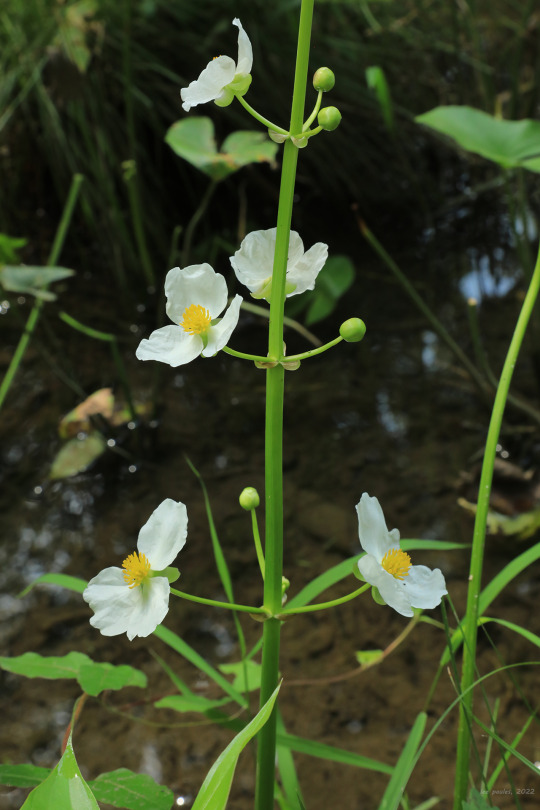

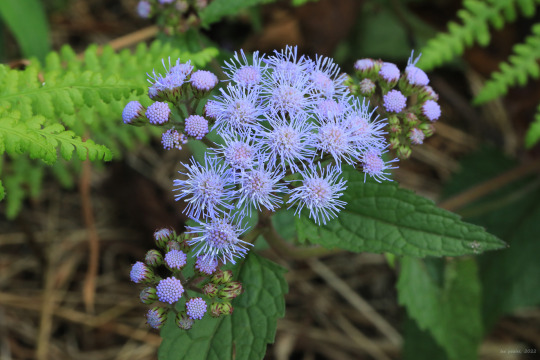



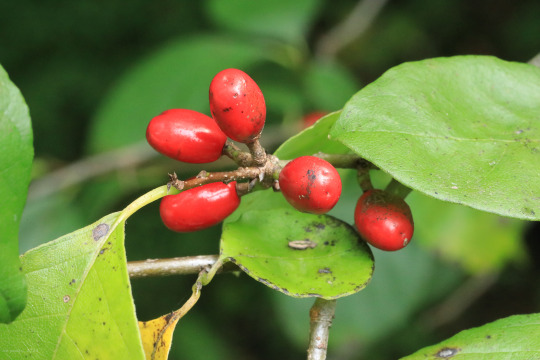
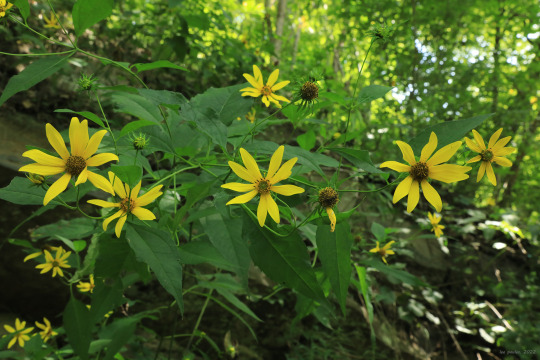
Photos from a late summer bike ride on the Mon River Trail. With autumn just around the corner, the climatic, life-sustaining ceremonies of the season have taken on a frantic, bittersweet urgency, from the proliferation of late summer blooms to the frantic chirrups of insects in search of mates before they succumb to the first frost of October. As the deep greens of summer fade and begin to sacrifice themselves to a fiery self-immolation, I salute Nature’s relentless push to plant the seeds of next year’s renewal.
From top: broadleaf arrowhead (Sagittaria latifolia), also known as duck-potato and wapato, an attractive aquatic plant whose edible tuber was an important source of starch for Native Americans; great blue lobelia (Lobelia siphilitica); a showy relative of cardinal flower with blue, split-lip flowers; blue mistflower (Conoclinium coelestinum), also known as wild ageratum and blue boneset, an unusual late summer aster with disc flowers only; tall coreopsis (Coreopsis tripteris), also known as tall tickseed, a grand, stately perennial up to 8 feet tall with distinctive tripartite leaves; a goldenrod soldier beetle (Chauliognathus pensylvanicus) navigating a wingstem flower (Verbesina alternifolia); northern spicebush (Lindera benzoin), a colonizing shrub whose luminous yellow leaves in fall contrast with its brilliant-red, aromatic berries; and pale-leaved sunflower ( Helianthus strumosus), a perennial sunflower whose leaves are mostly opposite in arrangement with long petioles and pale undersides.
#appalachia#vandalia#west virginia#mon river trail#late summer#life#renewal#flora#wildflowers#insects#sagittaria latifolia#broadleaf arrowhead#duck-potato#wapato#lobelia siphilitica#great blue lobelia#conoclinium coelestinum#blue mistflower#wild ageratum#blue boneset#coreopsis tripteris#tall coreopsis#tall tickseed#chauliognathus pensylvanicus#goldenrod soldier beetle#verbesina alternifolia#wingstem#Lindera benzoin#northern spicebush#helianthus strumosus
100 notes
·
View notes
Text
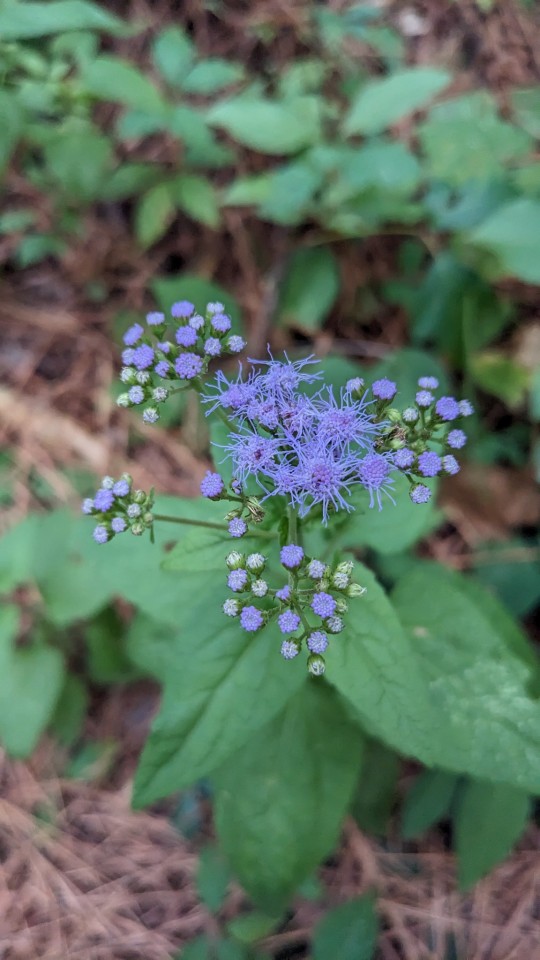
Conoclinium coelestinum / Blue Mistflower at the Sarah P. Duke Gardens at Duke University in Durham, NC
#Conoclinium coelestinum#Conoclinium#Blue Mistflower#Mistflower#Wild ageratum#Blue boneset#Native plants#Native flowers#Nature photography#photographers on tumblr#Sarah P. Duke Gardens#Duke Gardens#Duke University#Durham#Durham NC#North Carolina
3 notes
·
View notes
Photo
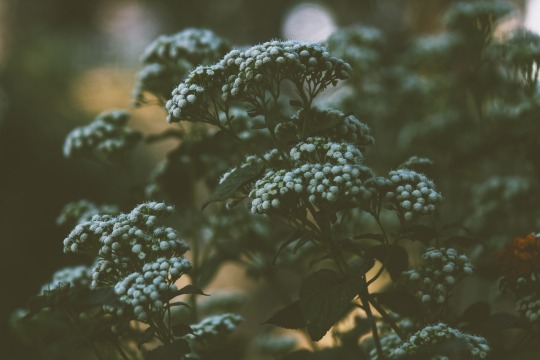
28 notes
·
View notes
Text
Blue Mistflower (Conoclinium coelestinum (L.) DC.)
Asteraceae/Compositae (Aster/Composit Family)
Synonym(s): Wild Ageratum, Blue Boneset
Base Flower Color: BlueReproductive Phenology: Jun, Jul, Aug, Sept, Oct, NovNotes: Blue Mistflower attracts bees and butterflies. However, this wildflower spreads quickly and can become a pest.
For more information about this plant, Click Here.
Similar Species: Pink Thoroughwort (Fleischmannia incarnata…

View On WordPress
0 notes
Photo

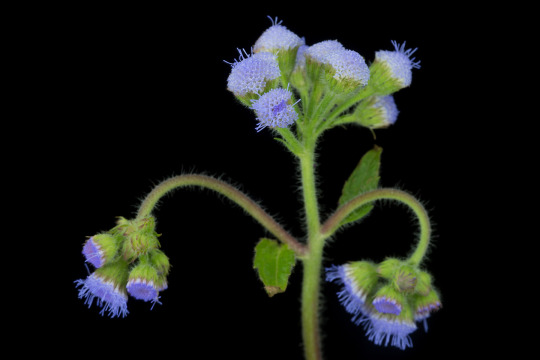


Ageratum houstonianum is an annual member of the sunflower family (Asteraceae) prized in ornamental gardens for its blue fluffy flowers. Originating in Mexico and Central America it has made its way throughout the world, quickly becoming naturalized and invasive. I found this subject growing wild on a hilly roadside on Oahu right next to the previously posted Medinilla magnifica, and made a collection to photograph that night. One notable trait of this plant is that all parts contain toxic alkaloids which make it hazardous when consumed for humans, but especially for grazing animals apt to eat larger quantities of it.
#ageratum#species#asteraceae#invasive#ecology#botanical#uvivf#glowing#composite#flower#blooming#hawaii
179 notes
·
View notes
Text
Flowers for Bees!
Hey, all!
Spring is coming up sooner than we know, and its about time for people to start planning their gardens! With news about climate and the state of bee populations, I know a lot of people are wanting to make pollinator gardens to help bees in their area, but may not know what to do asides from ‘plant flowers.’
So I set out to look at a bunch of websites, and use those sources, alongside my own experience as a gardener, to recommend a nice list of plants to include for a bee-friendly garden!*
Amongst all the websites I looked at, these are the ones that popped up! Bolded plants are ones that appeared a lot during this research--across at least 3 different sites, but sometimes as often as across 7!
Asteraceae (a family of plants containing asters, ageratum, calendula, coneflowers, coreopsis, cornflowers, cosmos, daisies, dandelions, echinops, goldenrod, joe-pye weeds, liatris, rabbit brush, rudbeckia, sunflowers, thistles, yarrow, zinnias, etc.)
Bluebells
Borage
Butterfly Bush (sometimes referred to by its genus, Buddleia)
Caltrop
Chives
Clematis
Clovers
Cotoneaster
Creosote bush
Crocus
Currant
Elder
Fabaceae (a family of plants containing alfalfa, clover, lupine, peas, peanuts, wisteria, etc.)
Fennel
Flowering Gum
Foxglove
Grevillea
Hebe
Hellebores
Honeysuckle
Hostas
Huckleberry
Lamiaceae (a family of plants containing agastache, basil, bee balm (sometimes referred to as its genus, Monarda), coleus, hyssop, lavender, marjoram, mint, oregano, rosemary, sage (sometimes referred to a its genus, Salvia), thyme, etc.)
Lilac
Lilies
Marjoram
Mignonette
Nasturtium
Oregon Grape
Pansy
Penstemon
Peony
Phlox
Pincushion flower
Poppy
Primula
Pussy willow
Queen Anne’s Lace
Red Maple Tree
Rhododendron
Rose
Scorpion-weed
Sedum
Siberian Squill
Snapdragons
Snowberry
Snowdrop
Sweet William
Thrift/Sea Thrift/Sea Pink
Tulip Poplar Tree
Verbena
Wallflower
Wild Buckwheat
Witch Hazel
I, as a gardener in Florida, have personal experience growing plants for pollinator gardens, and have noticed bees frequenting sunflowers, lavender, Mexican heather, bee balm, coneflowers, lantana, marigolds, milkweed, and zinnias a lot. This isn’t necessarily to dunk on other plants on the list--a lot of them I’ve never even seen in person, let alone had a chance to grow in a garden! See which ones would thrive in your area and give them a shot!
Another post is in the works regarding general planting advice, since this post is getting a bit long. Afterwards, there’ll be another post about things you can do for bees that don’t simply include planting flowers!
I hope this list is helpful to you! By all means, feel free to hop into my inbox and ask for further advice, or seek out resources on the internet as well! Happy gardening!
Sources: x x x x x x x x x x
* Bee friendly, but I didn’t specify a particular species, so it may be a bit honeybee-leaning. If there’s enough interest, I’ll start making posts for native bees specifically.
EDIT: Hello friends! I just want to make a quick amendment to this post--I wrote it really quickly, about 2 years back, to procrastinate a homework assignment, and missed a few points I should have made in my rush. First things first, while this list contains a lot of popular bee plants, please make sure the plants you ultimately use in your garden are native to your area--at the very least nonnative, but native plants will be more helpful for bees in your area and be less finicky in their care! With that in mind, I used a lot of sources--some of the links are defunct now, unfortunately--from a lot of different places! Even though I'm Floridian and most of my experience revolves around gardening in Florida, when I make posts like these I try to consider that not everyone seeing it will be in Florida--or even the United States! One of the sources I used had an Australian domain name, and many of these plants have wide reaches of where they come from and where they can survive! With that in mind; if you see a plant on this list that is invasive in your area, it may be perfectly calm and native in someone else's area; whether it be my area, or in another country. Please don't take to the notes to yell at me for including it!
Addendum aside, I hope this post is helpful to you!
#bees#pollinators#pollinator garden#pollinator gardening#pollinator garden tips#outdoor gardening#gardening#plants#flowers#climate change#eco activism#gardening help#gardening advice#gardening tips#bee garden#out of queue#aniporiginals#ani rambles
565 notes
·
View notes
Text
5 Garden Pests – Insect Identification & Treatment Tips
Prevent your garden from being devoured by uninvited pests. By knowing how to protect your garden from a variety of insects, you can grow your plants and crops stress-free.
gardeninginfo-online.com gathered the following information and tips to help you eliminate garden pests naturally, without using harsh chemicals.
Garden Pests – Identify and Combat These Insects
The following common garden pests, if left unchecked, can consume enough of your garden to leave your plants in poor health and your crops partially destroyed.
Slugs and Snails
Basically, slugs are snails without the shell. These gastropods eat large, ragged holes in the foliage of plants and can entirely consume seedlings. Slugs and snails pose a particular threat to:
Violets
Lilies
Cabbage
Lettuce
Strawberries
Spider Flowers (Cleome)
Floss Flower (Ageratum)
Hostas
The more problematic species of slugs and snails include:
Garden Snail (Helix aspersa)
Grey Garden Slug (Deroceras reticulatum)
Tawny Garden Slug/Cellar Slug (Limax flavus)
Leopard Slug (Limax maximus)
Slugs and snails travel over a trail of mucus, seek protection from dehydration in cool, shaded, and damp locations. Unless disturbed or treated, they will return to their hiding and feeding places nightly.
You can confirm the presence of snails and slugs in your garden by the dried mucus/slime trails they leave behind.
Control measures include:
Physical removal, when combined with other control measures, is an effective and long-lasting method of control.
Diatomaceous earth or “DE” sticks to the snail or slug’s body, causing desiccation. DE dust should be applied in inch-wide bands near and around your plants and garden. Reapplication may be necessary after heavy rain.
Copper strips fastened to flower bed containers or boxes are incredibly effective. Snails and slugs have a shock-like reaction when they are in contact with the metal.
Commercial traps, boards, tiles, shingles, or anything that offers daytime protection are very effective in trapping this pest.
Yeast trapping is another efficient method of control. Shallow containers filled with water and yeast or beer lure snails and slugs to the container only to fall into the liquid and drown.
While there are chemical control methods, it is highly recommended to seek natural, chemical-free solutions. If chemical control is used, pay particular attention to the label and its safety measures.
Caterpillars
Caterpillars are moths and butterflies in their larvae stage. These insects chew irregular holes in leaves or flowers and can entirely consume seedlings, young shoots, buds, leaves, or flowers.
A caterpillar’s diet is comprised almost exclusively of plants. Most caterpillars can be found consuming plant foliage, but some may feed on seeds, roots, stems, fruit, or flower petals.
Tip: Caterpillars can be identified by the three pairs of (true) legs behind the head and five or fewer pairs of leg-like appendages on some but not all abdomen segments. These features distinguish them from beetle, fly, and sawfly larvae.
Some of the more common, problematic species include:
Tent Caterpillar (Malacosoma americanum)
Evergreen Bagworm Caterpillar (Thyridopteryx ephemeraeformis)
Banded Woollybear Caterpillar (Pyrrharctia isabella)
American Lady Butterfly (Vanessa virginiensis)
Common Buckeye Butterfly (Junonia coenia)
Giant Leopard Moth Caterpillar (Hypercompe scribonia)
Bent-line Gray Caterpillar (Iridopsis larvaria)
Fruit Tree Leafroller Caterpillar (Archips argyrospila)
Cabbage Looper Caterpillar (Trichoplusia ni)
You can easily confirm the presence of caterpillars by examining the extensive damage to foliage, leading you to the insect’s presence. Caterpillars feed practically non-stop until they enter the pupa stage of their lifecycle.
Control measures include:
Pruning off rolled or webbed leaves and handpicking caterpillars from plants.
Applying bacillus thuringiensis-kurstaki (Btk) an organic microbial insecticide that kills only caterpillars. This product is safe to use around bees, beneficial insects, and wildlife. Newly hatched caterpillars must feed on treated leaves to be eliminated. Treatment timing is critical in early to mid-spring.
Covering your plants or crops with an insect barrier fabric (floating row cover). The covering forms a barrier, keeping moths and butterflies from laying eggs on the plants.
Neem oil can be sprayed directly on plants and foliage throughout late winter and spring to prevent egg laying and deter caterpillars from consuming the plant.
If commercial pesticides are used, pay close attention to the label and use only as directed. When treating edible plants, it is highly recommended to use organic alternatives.
Tip: When physically removing caterpillars from your garden, keep a container with a warm water and detergent solution handy. This solution kills caterpillars quickly.
Beetles
The beetle family (Coleoptera) consists of thousands of species, both destructive and beneficial, all necessary to maintain equilibrium in our environment. The following beetles are considered beneficial in a garden setting:
Tiger Beetles (Cicindelinae)
Soldier Beetles (Cantharidae)
Lady Beetles (Coccinellidae) also called ladybirds and ladybugs
Lady Beetle Larvae
These beetles spend their larval stage and adulthood consuming aphids, mealybugs, small invertebrates, and other insects. The following beetles devour plants, leaves, flowers, and can severely damage or kill trees:
Japanese Beetles (Popillia japonica)
Black Blister Beetles (Epicauta pensylvanica) Meloidae family
Red Milkweed Beetles (Tetraopes tetrophthalmus)
Cottonwood Borer (Plectrodera scalator)
Northeastern Sawyer Beetle (Monochamus notatus)
Rose Chafer (Macrodactylus subspinosus)
All beetles have a set of hard outer wing cases, known as elytra, and a hard upper body called a carapace. The elytra cover the flight wings and come together to form a straight line down the back. Beetles all have chewing mouthparts, powerful jaws, and antennae that are often longer than their boy length.
Damages may include boring holes in stalks and trunks, and partially or entirely consumed foliage, flowers, or fruit.
Control measures include:
Apply floating row covers
Prune and destroy (burn) affected stems and foliage
Handpick them and drown in a warm water, vinegar, and detergent solution
Spray foliage and stems with insecticidal soap or neem oil
Set out lures to draw soldier beetles (predators) to your yard and garden
Tip: You can attract soldier beetles by cultivating pollen-producing plants and allowing milkweed and wild lettuce weed species to grow.
Note: Using commercially produced chemical sprays or deterrents may cause severe damage to beneficial insects and the plant itself. It is highly recommended to use organic alternatives when treating consumable crops.
Aphids
Tiny aphids (Aphidoidea) congregate and quickly reproduce to form large groups that wound and suck juices from the host plant to the point of causing it to wilt, dehydrate, die. Without control measures, a small aphid issue can become an out-of-control infestation.
Aphids have long antennae and two tubes projecting from the rear of their abdomen. They are found in green, yellow, red, brown, or gray. They may be winged, depending on the species and life stage.
They usually congregate on fruits and vegetables, flowers, ornamentals, and even shade trees throughout the North American continent. Aphids feeding on plant sap cause foliage to distort and drop. Honeydew excreted on leaves promotes sooty mold growth, and their feeding can spread viral plant diseases.
The honeydew produced by aphids not only causes the growth of sooty mold, but it also attracts other insects, including ants, that compound the pest problem.
Control measures include:
In infested areas, frequently wash sturdy plants with a strong spray of water
Attract native predators and parasites such as aphid midges, lacewings, and lady beetles
Cover plants with floating row covers
Apply hot-pepper, garlic repellent sprays
When infestations become severe problems, apply horticultural oil, insecticidal soap, or neem oil
Note: Aphid infestations are typically accompanied by an ant infestation. Ants “herd” the aphids and farm the honeydew to nourish their colony. Once you control the aphid infestation, direct your attention to controlling the ants.
Ants
Individual ants are members of highly organized colonies. They are always in search of nourishment and water to promote the health and growth of their colony.
Once a source of nourishment is located, ants will return to their colony via a pheromone trail, which is the path for the rest of the colony to follow. As long as the pheromone trail exists, ants will follow it regardless of your control measures.
Ant colonies can consume incredible amounts of plant foliage, but, as previously mentioned, they can also “herd” aphids to collect the honeydew they produce after consuming the juices from your plants.
Some of the more destructive ant species are:
Black Garden Ant (Lasius niger)
Black Carpenter Ant (Camponotus pennsylvanicus)
Fire Ants (Solenopsis invicta) also known as Red Imported Fire Ant (RIFA)
Wood Ants, Mound Ants, Thatching Ants, and Field Ants are all part of the genus Formica
Leafcutter Ants are part of nearly fifty species belonging to the Atta and Acromyrmex genera
Control measures include:
Squeeze a lemon or an orange over areas where the ants transit
Sprinkle pepper, salt, cayenne pepper, or cinnamon around areas you wish to protect
Peppermint or white vinegar can be spread around to repel them
Spray ants with a mixture of water and dish soap (the soap penetrates their exoskeleton and kills them)
Lay a one-inch strip of food-grade diatomaceous earth by trails and nests
Set borax (or boric acid) and sugar poison traps around your plants
Set traps with powdered sugar and baking soda (the baking soda dries their bodies and kills them)
Eliminate aphids from your garden
Tip: Wherever you see an ant trail, make it your goal to interrupt the pheromone trail they are leaving behind. You can accomplish this with diluted white vinegar or juice squeezed from a lemon or an orange.
Note: When you apply salt to soil, you are altering the soil’s pH and potentially harming the plants growing there.
Read the following link for additional tips and advice on keeping pests out your garden, and check out this simple recipe for homemade non-toxic pesticides for your garden.
Garden Pest Control
In this article, you discovered information on how to identify and eliminate 5 destructive garden pests without using harsh chemicals.
When you take action to control and eliminate garden pests, you can preserve your garden and crops, harvesting pristine fruits and vegetables.
Allowing garden pests to flourish can lead to massive infestations leaving your garden looking chewed up and dying.
Sources:
extension.umd.edu/hgic/topics/slugs-and-snails-flowers
wildlifetrusts.org/wildlife/how-identify/identify-caterpillars
insectidentification.org/insect-description.asp?identification=Aphids
extension.umn.edu/insects-infest-homes/ants
caterpillaridentification.org/
ipm.ucanr.edu/QT/lfcaterpillarscard.html
The post 5 Garden Pests – Insect Identification & Treatment Tips appeared first on http://gardeninginfo-online.com.
1 note
·
View note
Text
☼ ☼ ☼ ⎿ MUSE A : KATHRYN NEWTON, CIS FEMALE, SHE/HER ⏋ oh look, CAMERON REID is back, the TWENTY year old HEAD OF DANCE AND GYMNASTICS at camp otenaw. looks like it’s their SECOND year as a staff member. rumour has it, they tend to be IMPETUOUS and SELF-CENTERED, but hopefully we’ll get to see their HUMOROUS and SPIRITED side too. I heard they WERE FIRED FROM THEIR PREVIOUS JOB AS A BACKUP DANCER ; let’s hope this will be an epic summer ! ⎿ BROOKE, 22, EST, SHE/HER ⏋ ☼ ☼ ☼

hey everyone! i’m brooke, and i’m so excited to be rping with you all this summer! i’m 22 and live in the est, but i’m basically nocturnal at this point, so expect me to post at weird times probably. anyway, i’m currently playing my queen, cameron reid! without further ado, here’s her intro!
history
cameron reid was born in winnipeg, manitoba to andrew reid and lucas reid-kleinman via surrogate. she’s the second child of four, but her dads always had more than enough money to provide for them. andrew is a big-shot defense attorney and lucas owns his own clothing brand, reid-kleinman.
when she was four, she watched barbie in the nutcracker for the first time and fell in love. seriously, cameron saw that movie probably a thousand times over the next year. her fathers quickly decided to let her try dance classes, and cam’s been hooked ever since. she started with ballet, and eventually signed up for jazz, contemporary, tap, hip hop, modern and ballroom too. it’s her whole life, honestly.
she started dancing competitively when she was eight, and began placing in third or higher by the time she was ten. eventually, she started being homeschooled to make time for rehearsals.
but, all of that was during the school year. during summer, cameron spent her time at camp otenaw. all four of the reid kids attended camp at least once, but cameron’s the only one who stuck around. the sunshine and fresh air felt pretty magical after nine months indoors, training and preparing for competitions. she loves dancing, don’t get her wrong, but being outside and goofing off with her camp friends will never get old. she’s been here since she was an itty bitty ageratum, and now she’s a counselor!
she started working at otenaw two summers ago, but back then she was just a dance counselor. that fall, she went to the ryerson school of performance for dance for her freshman year. during the fall semester of her sophomore year, she was scouted and offered a job as a backup dancer on a tour for a well-known pop star, and she took it without hesitation. in cameron’s mind, she could always just go back to school if things didn’t work out.
and they didn’t. she hated tour life; it was exhausting and demanding and full of constant criticism. it seemed like everyone was constantly snapping at her, and the whole environment just really made her upset. things came to a head when she ended up blowing up at the pop star, effectively getting her fired before the tour was even over.
so now, she’s sort of dealing with the thought that she might have ruined her career before it even took off, and she’s freaking out about what she’s going to do in the fall. and she is telling NO ONE that she got fired because she’s very embarrassed by it and wants people to think she’s fun and successful and great!!! she’s a bit of a perfectionist, can you tell?
personality + head canons
it would be so easy to write cameron off as the pretty little rich girl - and she is, in a lot of ways. but, coming to camp has also really pushed her to fend for herself. she’s been able to build her own campfires since her third summer at camp, and she’s right at home on the sports fields or in a canoe. the only time she really freaks out over being in the great outdoors is when she sees a spider, but that is a very normal fear, okay?
cameron doesn’t take shit from anyone. like the first person to make some comment about her being a dumb blonde or a girlie girl is going to get a ten minute lecture on why it’s not a bad thing to be blonde or feminine. she’s a tiny, feisty feminist who does not back down from an argument.
she loves a good party. during the rest of the year, she trains pretty hard and doesn’t really go out and drink much, so she goes a bit wild at camp. cameron’s a social butterfly and a happy drunk, so she’s usually the girl who makes sure everyone is having fun and that no one feels left out.
she’s smart, strong and capable, but she can be a bit self-centered at times. everyone has flaws, alright? cameron focuses on herself and her own problems more than anyone else, which isn’t great but is very human. she’s also the first person to throw caution to the wind and do something crazy because it sounds like a good idea at the time. like the time she went skinny dipping in the lake at midnight and almost got caught. it seemed like a good idea at the time, honestly.
she’s sort of inspired by elle woods (legally blonde), cher horowtiz (clueless), and torrance shipman (bring it on) because i love blonde protagonists from 1995-2001 apparently.
wanted connections
i’d love for her to have a sibling-like friendship? like she and someone else who’s been coming here for forever have just formed this really tight bond over the years and they tease each other constantly but would kill for each other at this point?
her cousins! i’m super open with this, but i just think it would be fun for her to have cousins (distant or close) that go here too? idk
a rival of some sort? like maybe they started some sort of friendly rivalry back when they were tiny babies here at camp and they keep it up for the fun of it? like any time there’s a sports competition, they’re on opposite teams because everyone knows they’ll cancel each other out with their competitiveness
a will-they-won’t-they type of relationship where they’ve known each other for years and flirt a lot, but they’ve never actually gone for it because both of them think the other probably doesn’t like them like that?
more can be found here! and i’m always down to brainstorm something else! like this for me to message you to plot <3
4 notes
·
View notes
Text
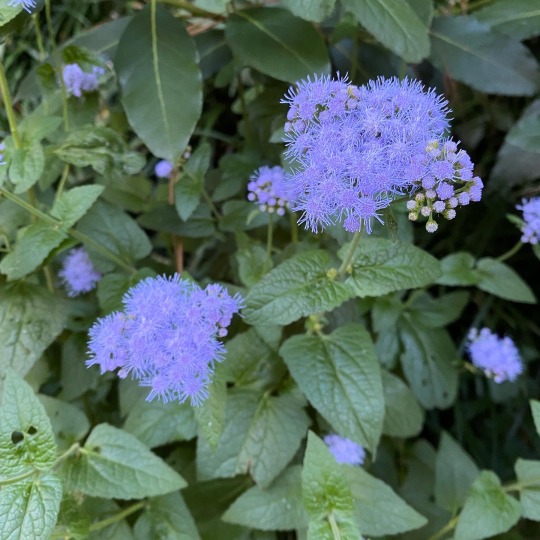



Blue Mistflower or Wild Ageratum (Conoclinium coelestinum)- is one of my favorite native perennials. It begins blooming in the Fall when not much else is blooming but it can be aggressive in a moist and sunny location.
0 notes
Photo

Wild ageratum aka blue mistflower is a native wildflower in the aster family that pollinators love. #gardendc #flowerfriday #wildageratum #bluemistflower #dmv #picoftheday #nofilter #wildflowers (at Meadowlark Gardens Regional Park) https://www.instagram.com/p/CTFDEJRrMdK/?utm_medium=tumblr
0 notes
Text

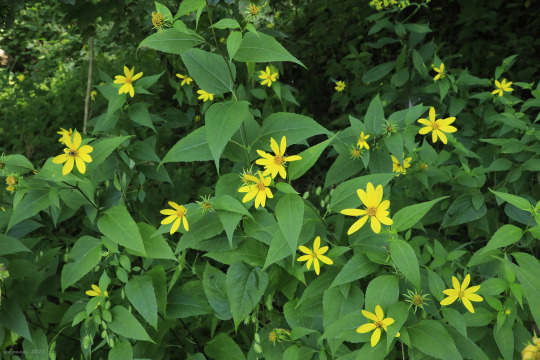

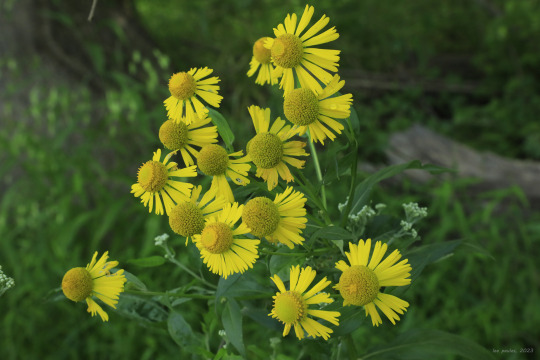
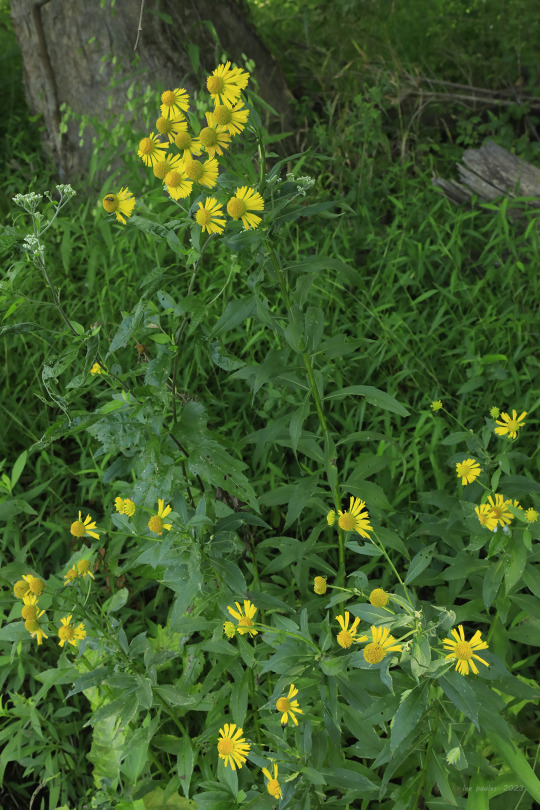

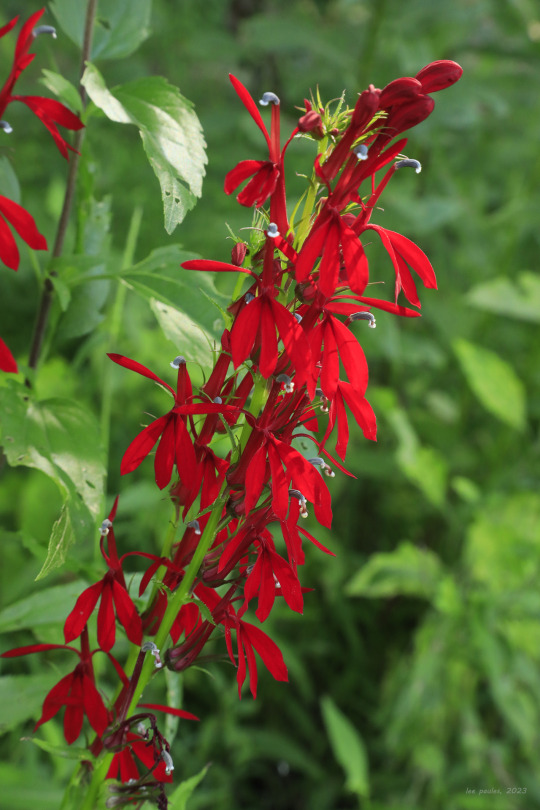

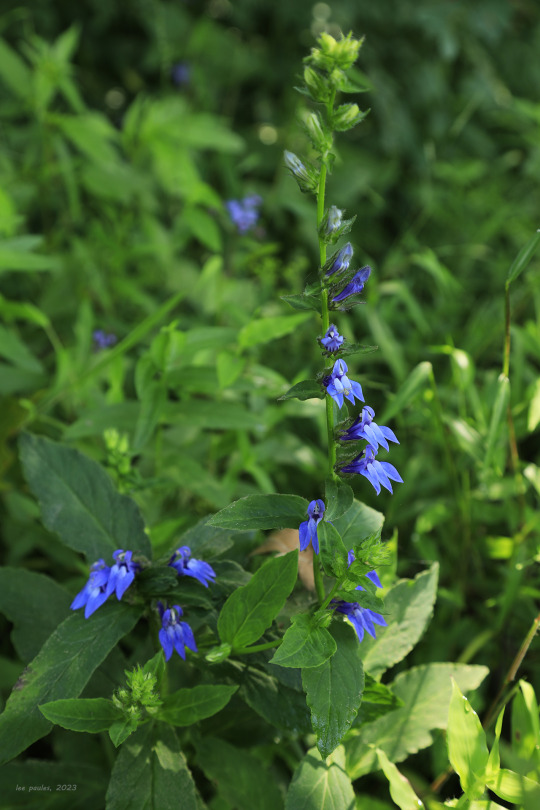

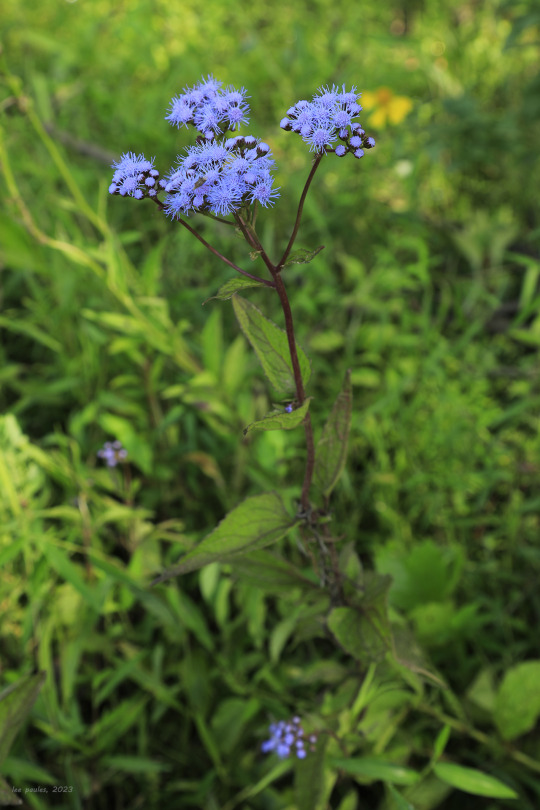
A selection of late summer wildflowers growing in the riparian zone along the Monongahela River at the Friendship Hill National Historic Site.
From top: Paleleaf woodland sunflower (Helianthus strumosus), also known as pale-leaved sunflower, distinguished by long leaf petioles and a pale leaf underside; common sneezeweed (Helenium autumnale), a water-loving aster whose dried leaves were once used to make snuff; cardinal flower (Lobelia cardinalis), whose scarlet, five-lobed flowers draw hummingbirds as pollinators; the closely-related great blue lobelia (Lobelia siphilitica), which early settlers once used as a treatment for syphilis (wishful thinking); and blue mistflower (Conoclinium coelestinum), or wild ageratum, a native aster that has become popular as a garden plant.

As a note, about a dozen sunflowers call NC-WV - SW PA home and they readily hybridize, often complicating identification. Pale-leaved sunflower has a tall, branching structure up to 7 feet in height and dense clusters of large flowers. In addition to long petioles and a pale leaf underside, this sunflower has a smooth stem with a whitish bloom to it. It's a very beautiful mid-to-late summer aster and one of my favorite wildflowers of Central Appalachia.
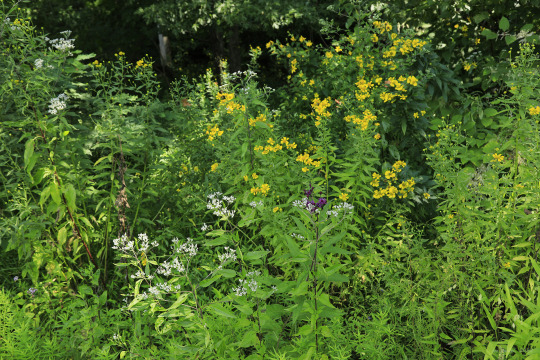
#appalachia#vandalia#wildflowers#flora#summer#pennsylvania#monongahela river#friendship hill national historic site#pale-leaved sunflower#paleleaf woodland sunflower#paleleaf sunflower#common sneezeweed#cardinal flower#great blue lobelia#blue mistflower#mistflower#wild argeratum#riparian
131 notes
·
View notes
Text
The Reasons Why We Love White Flower Design | White Flower Design
Who doesn’t adulation a boutonniere of fresh-cut flowers? It’s like bringing the garden into your home, bushing it with admirable blush and fragrance.

Free Black and White stencil | … vector of ‘Floral seamless .. | white flower design
If taken affliction of properly, the boutonniere can aftermost for days.
You can actualize a attractive adjustment for your home or addition appropriate with aloof a few items. Alpha by allotment the architecture appearance for the piece. Whether you are creating a aerial adjustment of pinks, purples, whites and babyish dejection or article close with alien bulb material, the choices are endless.

Imágenes, fotos de stock y vectores sobre Green and White Flowers .. | white flower design
Your architecture can be baby and bunched architecture or apart and wild. Accomplish an appulse by application a distinct annual type, such as all tulips, hydrangeas or roses. Or accomplish it a monochromatic alternative and use all white or all amethyst flowers. Go academic and adventurous with red roses, or accomplish it a added rustic or close arrangement.
Flowers are readily accessible at grocery and broad stores. There you’ll acquisition aggregate from calla lilies and carnations to daisies and dahlias, gerbera daisies, orchids, roses and sunflowers. You can additionally acquirement accompaniment greenery such as baby’s breath, accretion of Ireland, arenaceous miller, eucalyptus, fern, Italian ruscus and ivy to add adjustment to the adjustment and ample in.

Succulents and White Flowers Watercolor Clipart with Greenery – white flower design | white flower design
The admeasurement of your adjustment depends on the admeasurement of the vase. Put baptize into the vase. If your flowers came with a bactericide solution, add it now. If you don’t accept any, you can use a few drops of achromatize to annihilate any bacilli and accumulate the flowers fresh.
A acceptable aphorism of deride is to accomplish your boutonniere about one and a bisected times taller than the alembic or boutonniere that it will be placed in. For a accurate look, antithesis the amplitude and the height. However, don’t be apprenticed by rules. Accomplish the greenery college on one ancillary while absolution it discharge over on the added to accord your adjustment some aberration and interest.

Flowers white roses with green leaves. Natural pattern to design. | white flower design
To align the flowers, alpha by abacus the better flowers aboriginal and again assignment in a circle, axis the boutonniere and abacus flowers as you go. Cut the stems at an bend about an inch from the basal with garden shears to acquiesce stems to booty up added water. Studies accept apparent that acid the stems beneath active baptize helps them booty up baptize appropriate away. Remove any foliage beneath the waterline.
Layer in the abutting array of annual and echo until all flowers accept been added, and accomplishment the adjustment by abacus greenery, baby’s animation or berries.

Succulents, White Flowers and Greenery Design Set – white flower design | white flower design
Of course, it’s admirable to cut flowers from your own mural for arrangements. Some flowers that will abound able-bodied in Louisiana and accomplish abundant cut flowers for alignment accommodate sunflowers, ageratum, roses, arenaceous miller, allium, zinnias, gerbera daisies, asters,
The Reasons Why We Love White Flower Design | White Flower Design – white flower design
| Welcome in order to my blog site, on this period I’m going to demonstrate with regards to keyword. And today, this is the very first picture:

Flowers Border Design Black And White | Flower border clipart .. | white flower design
How about graphic earlier mentioned? is of which wonderful???. if you’re more dedicated thus, I’l t teach you many image yet again down below:
So, if you desire to acquire the incredible pics about (The Reasons Why We Love White Flower Design | White Flower Design), click save button to store the photos to your pc. These are available for obtain, if you’d prefer and want to grab it, simply click save symbol on the article, and it’ll be immediately saved in your desktop computer.} At last if you like to secure new and the latest graphic related with (The Reasons Why We Love White Flower Design | White Flower Design), please follow us on google plus or save the site, we attempt our best to provide daily up-date with all new and fresh graphics. We do hope you like keeping right here. For most updates and recent information about (The Reasons Why We Love White Flower Design | White Flower Design) images, please kindly follow us on twitter, path, Instagram and google plus, or you mark this page on bookmark section, We attempt to present you up-date regularly with all new and fresh images, enjoy your browsing, and find the best for you.
Here you are at our site, articleabove (The Reasons Why We Love White Flower Design | White Flower Design) published . Today we’re delighted to announce we have discovered an incrediblyinteresting topicto be reviewed, namely (The Reasons Why We Love White Flower Design | White Flower Design) Lots of people looking for information about(The Reasons Why We Love White Flower Design | White Flower Design) and of course one of these is you, is not it?

Watercolor White Flower Clip Art – Design Cuts – white flower design | white flower design

Beautiful floral element. Black-and-white flowers and leaves. | white flower design

Imágenes, fotos de stock y vectores sobre Black & White Flower .. | white flower design

Black-and-white flowers and leaves design element – white flower design | white flower design

Black And White Flower png download – 13*13 – Free Transparent .. | white flower design

Black white flower lace eyelets design element – white flower design | white flower design

Beautiful floral element Black-and-white flowers and leaves. | white flower design
The post The Reasons Why We Love White Flower Design | White Flower Design appeared first on Wallpaper Nifty.
from Wallpaper Nifty https://www.flowernifty.com/the-reasons-why-we-love-white-flower-design-white-flower-design/
0 notes
Text
8 Facts About Blue Mist Flower That Will Blow Your Mind | Blue Mist Flower
8 Facts About Blue Mist Flower That Will Blow Your Mind | Blue Mist Flower – blue mist flower
| Encouraged to help my blog, in this particular occasion I’ll teach you regarding keyword. And today, here is the 1st impression:
Blue Mist Flower (Conoclinium coelestinum) – blue mist flower | blue mist flower
Why don’t you consider image preceding? is that remarkable???. if you’re more dedicated consequently, I’l m teach you a few graphic once more under:
So, if you wish to obtain the awesome photos about (8 Facts About Blue Mist Flower That Will Blow Your Mind | Blue Mist Flower), simply click save button to download the photos to your pc. They’re all set for obtain, if you’d prefer and wish to have it, simply click save logo on the web page, and it will be immediately down loaded to your notebook computer.} Finally if you like to find unique and the latest graphic related to (8 Facts About Blue Mist Flower That Will Blow Your Mind | Blue Mist Flower), please follow us on google plus or bookmark this blog, we attempt our best to provide daily up grade with all new and fresh graphics. Hope you love keeping here. For some updates and latest news about (8 Facts About Blue Mist Flower That Will Blow Your Mind | Blue Mist Flower) pictures, please kindly follow us on twitter, path, Instagram and google plus, or you mark this page on bookmark area, We try to give you up grade periodically with all new and fresh shots, like your browsing, and find the best for you.
Here you are at our site, contentabove (8 Facts About Blue Mist Flower That Will Blow Your Mind | Blue Mist Flower) published . Nowadays we are delighted to declare that we have discovered a veryinteresting contentto be discussed, namely (8 Facts About Blue Mist Flower That Will Blow Your Mind | Blue Mist Flower) Some people attempting to find information about(8 Facts About Blue Mist Flower That Will Blow Your Mind | Blue Mist Flower) and certainly one of these is you, is not it?
Blue Mist Flower, Hardy Ageratum | University of Maryland … – blue mist flower | blue mist flower
Amazon.com : BLUE MIST FLOWER – WILD AGERATUM – BLUE – 8 … – blue mist flower | blue mist flower
Amazon.com : Blue Mist Flower – Conoclinium coelestinum – 8 … – blue mist flower | blue mist flower
Blue Mistflower Seeds and Plants (Conoclinium coelestinum) – blue mist flower | blue mist flower
Blue Mist flower, Native to NE Texas, about 8 ft tall … – blue mist flower | blue mist flower
Mist Flower (Wild Ageratum; Blue Boneset) | MDC Discover Nature – blue mist flower | blue mist flower
Mist Flower (Wild Ageratum; Blue Boneset) | MDC Discover Nature – blue mist flower | blue mist flower
from WordPress https://liaflower.com/8-facts-about-blue-mist-flower-that-will-blow-your-mind-blue-mist-flower/
0 notes
Text
8 Facts About Blue Mist Flower That Will Blow Your Mind | Blue Mist Flower
8 Facts About Blue Mist Flower That Will Blow Your Mind | Blue Mist Flower – blue mist flower
| Encouraged to help my blog, in this particular occasion I’ll teach you regarding keyword. And today, here is the 1st impression:
Blue Mist Flower (Conoclinium coelestinum) – blue mist flower | blue mist flower
Why don’t you consider image preceding? is that remarkable???. if you’re more dedicated consequently, I’l m teach you a few graphic once more under:
So, if you wish to obtain the awesome photos about (8 Facts About Blue Mist Flower That Will Blow Your Mind | Blue Mist Flower), simply click save button to download the photos to your pc. They’re all set for obtain, if you’d prefer and wish to have it, simply click save logo on the web page, and it will be immediately down loaded to your notebook computer.} Finally if you like to find unique and the latest graphic related to (8 Facts About Blue Mist Flower That Will Blow Your Mind | Blue Mist Flower), please follow us on google plus or bookmark this blog, we attempt our best to provide daily up grade with all new and fresh graphics. Hope you love keeping here. For some updates and latest news about (8 Facts About Blue Mist Flower That Will Blow Your Mind | Blue Mist Flower) pictures, please kindly follow us on twitter, path, Instagram and google plus, or you mark this page on bookmark area, We try to give you up grade periodically with all new and fresh shots, like your browsing, and find the best for you.
Here you are at our site, contentabove (8 Facts About Blue Mist Flower That Will Blow Your Mind | Blue Mist Flower) published . Nowadays we are delighted to declare that we have discovered a veryinteresting contentto be discussed, namely (8 Facts About Blue Mist Flower That Will Blow Your Mind | Blue Mist Flower) Some people attempting to find information about(8 Facts About Blue Mist Flower That Will Blow Your Mind | Blue Mist Flower) and certainly one of these is you, is not it?
Blue Mist Flower, Hardy Ageratum | University of Maryland … – blue mist flower | blue mist flower
Amazon.com : BLUE MIST FLOWER – WILD AGERATUM – BLUE – 8 … – blue mist flower | blue mist flower
Amazon.com : Blue Mist Flower – Conoclinium coelestinum – 8 … – blue mist flower | blue mist flower
Blue Mistflower Seeds and Plants (Conoclinium coelestinum) – blue mist flower | blue mist flower
Blue Mist flower, Native to NE Texas, about 8 ft tall … – blue mist flower | blue mist flower
Mist Flower (Wild Ageratum; Blue Boneset) | MDC Discover Nature – blue mist flower | blue mist flower
Mist Flower (Wild Ageratum; Blue Boneset) | MDC Discover Nature – blue mist flower | blue mist flower
from WordPress https://liaflower.com/8-facts-about-blue-mist-flower-that-will-blow-your-mind-blue-mist-flower/
0 notes
Text
8 Facts About Blue Mist Flower That Will Blow Your Mind | Blue Mist Flower
8 Facts About Blue Mist Flower That Will Blow Your Mind | Blue Mist Flower – blue mist flower
| Encouraged to help my blog, in this particular occasion I’ll teach you regarding keyword. And today, here is the 1st impression:
Blue Mist Flower (Conoclinium coelestinum) – blue mist flower | blue mist flower
Why don’t you consider image preceding? is that remarkable???. if you’re more dedicated consequently, I’l m teach you a few graphic once more under:
So, if you wish to obtain the awesome photos about (8 Facts About Blue Mist Flower That Will Blow Your Mind | Blue Mist Flower), simply click save button to download the photos to your pc. They’re all set for obtain, if you’d prefer and wish to have it, simply click save logo on the web page, and it will be immediately down loaded to your notebook computer.} Finally if you like to find unique and the latest graphic related to (8 Facts About Blue Mist Flower That Will Blow Your Mind | Blue Mist Flower), please follow us on google plus or bookmark this blog, we attempt our best to provide daily up grade with all new and fresh graphics. Hope you love keeping here. For some updates and latest news about (8 Facts About Blue Mist Flower That Will Blow Your Mind | Blue Mist Flower) pictures, please kindly follow us on twitter, path, Instagram and google plus, or you mark this page on bookmark area, We try to give you up grade periodically with all new and fresh shots, like your browsing, and find the best for you.
Here you are at our site, contentabove (8 Facts About Blue Mist Flower That Will Blow Your Mind | Blue Mist Flower) published . Nowadays we are delighted to declare that we have discovered a veryinteresting contentto be discussed, namely (8 Facts About Blue Mist Flower That Will Blow Your Mind | Blue Mist Flower) Some people attempting to find information about(8 Facts About Blue Mist Flower That Will Blow Your Mind | Blue Mist Flower) and certainly one of these is you, is not it?
Blue Mist Flower, Hardy Ageratum | University of Maryland … – blue mist flower | blue mist flower
Amazon.com : BLUE MIST FLOWER – WILD AGERATUM – BLUE – 8 … – blue mist flower | blue mist flower
Amazon.com : Blue Mist Flower – Conoclinium coelestinum – 8 … – blue mist flower | blue mist flower
Blue Mistflower Seeds and Plants (Conoclinium coelestinum) – blue mist flower | blue mist flower
Blue Mist flower, Native to NE Texas, about 8 ft tall … – blue mist flower | blue mist flower
Mist Flower (Wild Ageratum; Blue Boneset) | MDC Discover Nature – blue mist flower | blue mist flower
Mist Flower (Wild Ageratum; Blue Boneset) | MDC Discover Nature – blue mist flower | blue mist flower
from WordPress https://liaflower.com/8-facts-about-blue-mist-flower-that-will-blow-your-mind-blue-mist-flower/
0 notes
Photo

Blue Mistflower, Wild Ageratum, Blue Boneset (Conoclinium coelestinum)
0 notes